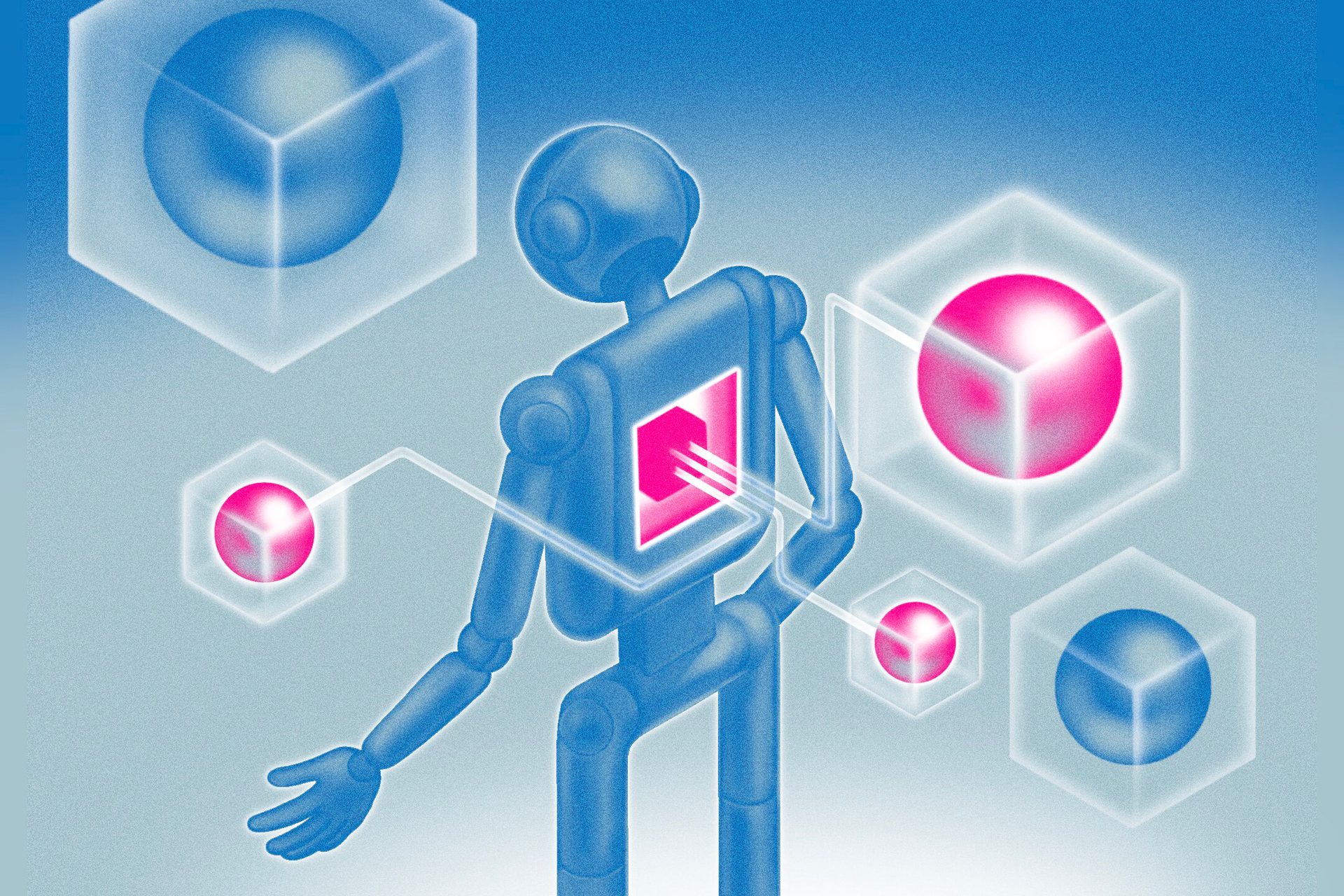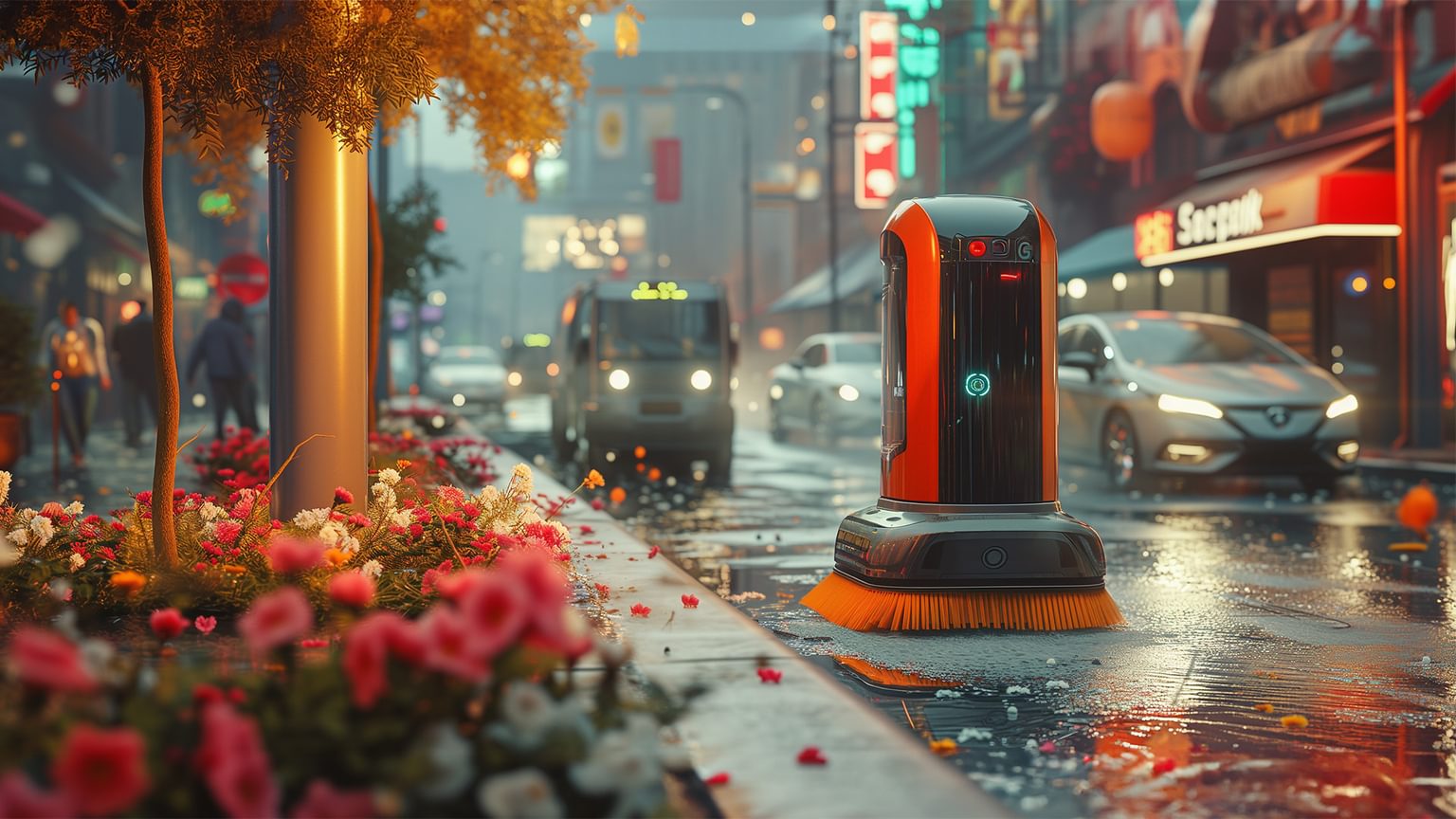
Technology

Devin Liddell | Principal Futurist

Devin Liddell
Devin designs preferred futures in aviation, automotive, smart cities, personal mobility, space travel, and more.
Connect with Devin on LinkedIn
We get philosophical about robots. This shows up especially in science fiction films, with benevolent and malevolent examples respectively thrilling and terrifying our imagined lives with robots. These reactions prompt important reflections on our responsibilities in creating and interacting with machines as well as what exactly it means to be human—thus all the philosophizing. Within these musings mostly about us, though, we can lose sight of why we want robots in the first place.
We want them to do work. In the simplest terms, a robot is a machine designed to accomplish a complex series of tasks automatically. So, while Baymax in Big Hero 6 is huggable and ED-209 in RoboCop is murderous—traits more closely aligned with personalities, their core functionalities point to the pragmatic motivations for designing them. Baymax is an integrated health monitoring and treatment device that operates continuously and ED-209 is a giant, mechanized form of law enforcement liberated from fatigue (and empathy and competence).
With that emphasis on work, here are five robots we’ll want for our cities in five years.
/ 01
Climate change and habitat destruction are bringing wildlife into cities. This includes bears, coyotes, and mountain lions in North American cities. More bears in Japan. Tigers in India. Elephants and crocodiles in Africa. While attacks on humans are rare, the influx of potentially dangerous wildlife into urban areas creates conflicts between animals and residents unaccustomed to sharing their spaces with species nearer the top of the food chain. These problems will only increase as cities grow and droughts, fires, and floods reshape how animals move around and forage.
Today residents rely on a variety of ad-hoc tools for detecting the presence of dangerous wildlife. But Facebook group pages and websites that track individual animals with radio collars and GPS tags either aren’t that helpful for real-time information or require proactive monitoring of known animals. Mobile yet quiet, inconspicuous robots designed to continuously patrol the liminal areas between cities and wild spaces will be a better solution. Capable of maneuvering rugged trails or even climbing trees, and equipped with thermal computer vision cameras and cellular, satellite, or mesh relay connectivity, these robots will give parks managers, fish and game wardens, school security officials, and residents precise and instantaneous alerts whenever animals that should be given a wide berth are passing through.

/ 02
A city’s street curbs are more complicated places than they used to be. Rideshare and delivery drivers compete for space with parked cars, scooters, as well as curb-side outdoor dining that emerged during the pandemic and then remained. Many urban streets also now feature bicycle lanes, which require smaller electric street sweepers to keep them clean and clear of debris. Curb gutters also collect leaves and garbage that ends up clogging storm drains, which is such a serious problem for many resource-constrained cities that they ask for citizen volunteers to “adopt” them.
There’s an opportunity within all this complexity for robots designed to do just two things: set up and manage dynamic loading zones for rideshare and delivery drivers during peak hours and then keep the street and its gutters tidy during off-peak hours. These part-time curb traffic managers, part-time sweepers will integrate with both driver and autonomous vehicle apps, directing vehicles to specific spaces. With the right sensors, they’ll also provide cities with important data about the waste they clean up, track storm water runoff pollution, and detect pathogens that can cause water-borne illnesses.
/ 03
Speaking of pathogens, shopping carts are gross. In one study more than 70% of carts tested positive for fecal bacteria, and more than half tested positive for E. coli. Shopping carts are also a source of injuries to both adults and kids, which creates liability risks for retailers. Those same retailers pay tens of millions of dollars every year replacing lost and damaged carts. They also pay fines to municipalities for significant numbers of carts that wander away from stores and end up blighting parks, roadways, and waterways.
The solution here is so straightforward it’s a bit surprising we don’t already have autonomous shopping cart robots. Similar robots have been working in distribution warehouses for years, following humans through aisles as they place items for shipping onto them. The same functionality, which will be especially helpful for older customers or those with disabilities, is entirely transferrable to retail environments, and they will deliver additional transformative benefits as well. For one, autonomous shopping cart robots will bring the checkout and bagging process into the aisles, tabulating coupons and payments automatically without ever having to unload and reload items—functionality that Amazon is already piloting with its Dash Cart technology. Second, these robots will be geofenced within their stores and parking lots, so they’ll never wander off into ditches or under bridges.
/ 04
Traffic intersections work through a collaboration between machine and human capabilities. The signals communicate to drivers, and drivers adhere to these signals and honor the right of way of other drivers. Based on traffic accident data, though, this has always been a dubious collaboration. While cities have endeavored all sorts of ways to improve traffic safety and cars are safer and safer by design, traffic fatalities increased more than 16% between 2018-2022. This is likely a combination of fewer police traffic stops, which would otherwise help correct dangerous drivers, and distracted driving from the use of mobile devices that no amount of public service announcements seems capable of abating.
Those trends aren’t positioned to reverse anytime soon. So, traffic intersection robots will play a vital role in improving traffic safety at our busiest intersections in several important ways. They’ll fill the gaps between existing signal infrastructure, automated camera-based enforcement systems that retroactively cite motorists, and the decreasing number of human police officers who want to work traffic intersections. Here, a physical presence inside intersections is advantageous as a vantage point for sensing and visually directing complex interactions between drivers, bicyclists, and pedestrians, a concept that’s already been trialed in some of the world’s most chaotic intersections. This kind of commanding presence is especially advantageous when there’s a power outage—which is not an occasional event given weather-related power outages have increased by almost 80% since 2011.

/ 05
Our cities are getting bigger—and noisier. Urbanites are regularly—and involuntarily—exposed to noise levels above 85 decibels, which is 15 times greater than the 70-decibel limit designated by the World Health Organization as “safe” for human hearing. This noise comes from transportation, industry, even nightlife. Noise is such a hot-button issue in cities that the din from pickleball courts is a growing source of conflict. This is no mere annoyance. Noise pollution is harming us mentally and physiologically, with linked effects including high blood pressure, heart disease, sleep loss, stress-related illnesses, and other maladies.
Cities are combating this problem on several fronts. Noise-diffracting barriers and rubberized asphalt. City-wide monitoring systems for catching “needless noise” offenders. Simply lowering speed limits and planting more trees. This problem requires many solutions. Noise-canceling dirigible robots will complement these solutions with flexible, dynamic autonomy. While this might sound—ahem—fantastical, Sony has already applied to patent similar technology in drones. Floating and unobtrusive, these fleets of blimp bots will create quiet zones for office buildings, high-rises, and residential neighborhoods adjacent to active construction sites, stadium events, and other impermanent sources of localized noise.
This article was originally published in Fast Company magazine.
Images generated by Teague using Midjourney.